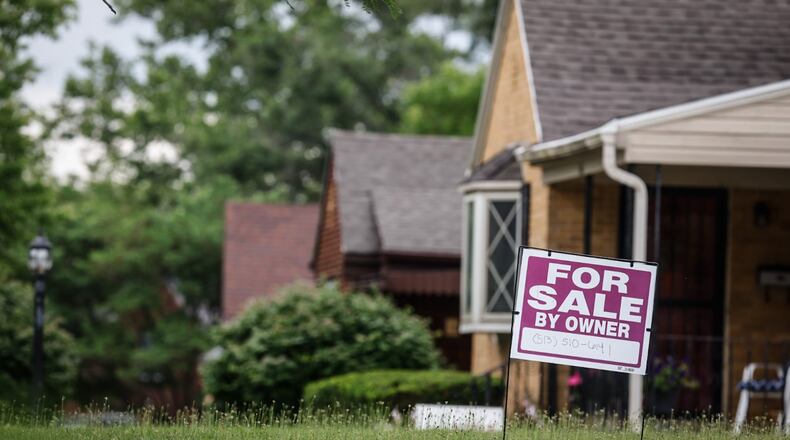High homeownership rates are important to communities and residents because they typically indicate healthier households, household ability to build wealth, residents tend to be more involved and there are other community benefits, said Julie Harris, director of the HomeOwnership Center in Dayton.
“Low homeownership rates tell us that purchasing a home is not affordable for low- to moderate-income households,” she said.
Ohio’s homeownership rate fell to 66% in 2022, and the only other time it was that low was in 2017, according to Census data that goes back to 1984.
The state homeownership rate increased in 2018, 2019 and 2020 before falling for the last two years.
Homeownership in the state peaked at 75.3% in 2005, which was a few years before the housing bubble burst.
The homeownership rate is calculated by dividing the number of owner-occupied homes by the total number of occupied homes.
The Dayton region had a homeownership rate between 61% and 67.6% in three out of the four quarters in 2022.
Ohio’s homeownership rate increased in the first quarter of this year, but that was after the Census estimated it was 64.4% in the final quarter of 2022.
The state’s Q4 rate was the first time on record that it was below the national average, says the Ohio Housing Finance Agency.
Some researchers and housing groups say that a sharp increase in interest rates had a major impact on housing markets and affordability.
“Rising mortgage costs have pushed homeownership out of reach for millions of renters at a time when large numbers of millennial households are at prime homebuying ages and when homeownership disparities between white households and those of color are near historic highs,” said the Harvard Joint Center for Housing Studies when it published a new report on housing last month.
In 2022, about 209,600 homes were sold in the state, which was the lowest total since 2015, said the Ohio Housing Finance Agency.
Last year, the median home price in the state was $174,000, which was the second highest on record when adjusted for inflation.
The highest median price was in 2021, when there was intense demand for housing because of the pandemic, as many people shifted to working from home.
This is a very challenging time to buy a home, even for people with moderate to high incomes, said Harris, with the HomeOwnership Center.
For low- to moderate-income households, it is nearly impossible to purchase a home, she said.
The inventory is very low, she said, and wages and incomes have not kept up with increases in housing costs.
The Dayton Daily News earlier this month reported on how the Dayton region is one of the worst metro areas in the nation for housing availability.
Many housing-seekers are outbid on available properties by out-of-town investors that can make cash offers, Harris said.
She also said many homebuyers at all income levels may be maxing out their affordability, which means they have less money to spend on other necessities.
Most people agree that Ohio needs new homes and housing product. While new home construction has increased across the state, it is far from keeping up with demand, officials say.
About the Author


